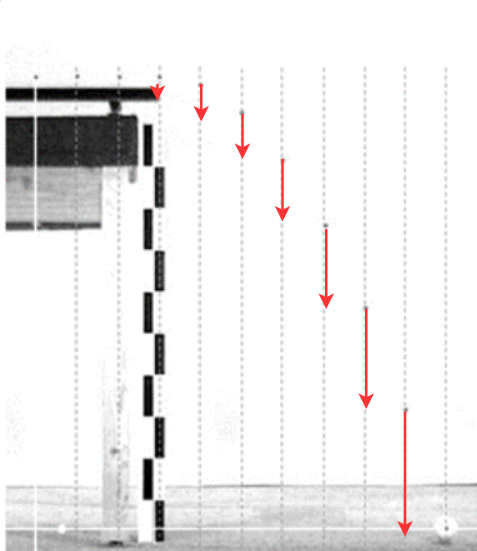Construct Vectors with Lengths Proportional to the Horizontal and Vertical Velocities: The images that follow are motion diagrams created based on a video analysis of the ball’s path. Use the fact that the lengths of displacement and velocity vectors are proportional to each other to draw a series of vectors that are proportional to the average x and y-velocity vector components during each 1/15th of a second time interval. Start with Frame 1 in each of the figures that follow. Place the tail of the first velocity vector at the ball’s location in frame 1 and then place the tail of the next vector at the ball’s location in frame 2 and so on.
Construct Vectors with Lengths Proportional to the Horizontal and Vertical Velocities: The images that follow are motion diagrams created based on a video analysis of the ball’s path. Use the fact that the lengths of displacement and velocity vectors are proportional to each other to draw a series of vectors that are proportional to the average x and y-velocity vector components during each 1/15th of a second time interval. Start with Frame 1 in each of the figures that follow. Place the tail of the first velocity vector at the ball’s location in frame 1 and then place the tail of the next vector at the ball’s location in frame 2 and so on.

There is a constant acceleration in downwards direction due to gravity so the vertical velocity vector magnitude keeps on increasing as the ball fall. The situation is drawn below,

Step by step
Solved in 2 steps with 2 images
